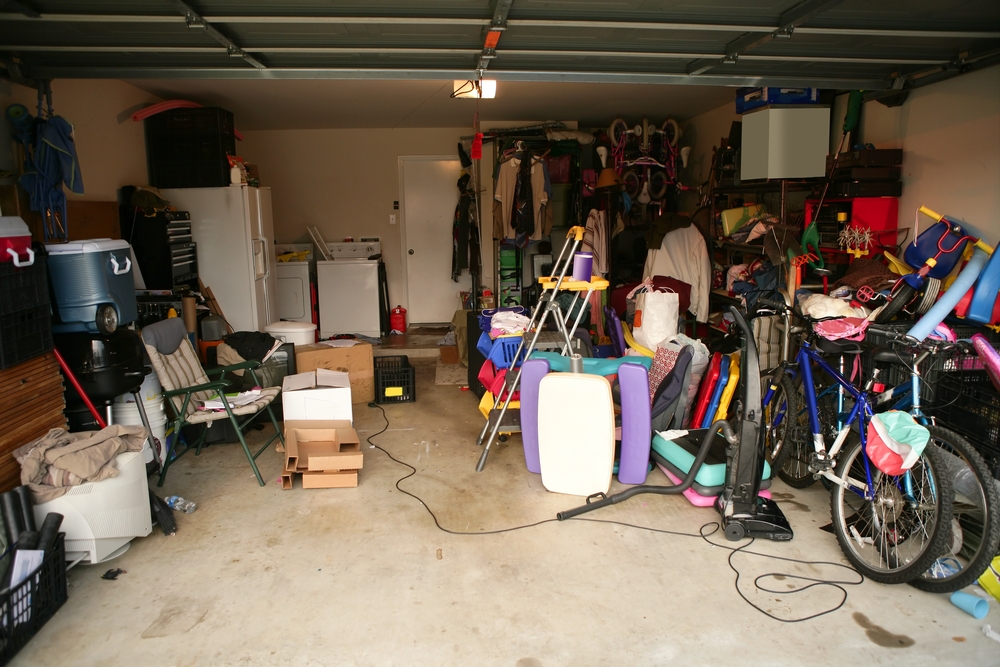
Caring for your bowling ball is an involved endeavor, but if you don't do it right, you’ll see the effects in how your ball looks, feels, or behaves on the lane. Part of caring for your bowling ball is storing it in the proper location. Many consider storing their balls in the garage, but is that a good idea?
In this article, we'll explore whether the garage is a proper storage area for your ball. And we'll also share a better alternative. Let’s get into it!
Contents
- 1 Can Bowling Balls Be Stored in the Garage?
- 2 How Cold Temperatures Affect Bowling Balls
- 3 How Hot Temperatures Affect Bowling Balls
- 4 What to Do if You Must Store the Ball in the Garage
- 5 Where Is the Best Place to Store a Bowling Ball?
- 6 Can You Repair a Cracked Bowling Ball?
- 7 Resurfacing a Warped Ball
Can Bowling Balls Be Stored in the Garage?
Can you store your bowling ball in the garage? Absolutely. A better question is, should you store your bowling ball in the garage? And the answer is it depends on how well your garage keeps the temperature from fluctuating inside. If the garage controls the fluctuating temperatures well, the garage is fine. If doesn't, don't.
People often want to store their bowling balls in the garage because they'll be out of sight, out of mind, and undisturbed. But there are some real issues associated with doing so. And those issues can negatively impact your ball.
How Cold Temperatures Affect Bowling Balls
Cold temperatures can have a significant impact on bowling balls.
Most bowling balls are made of a type of synthetic rubber, which becomes hard and brittle when the temperature drops below 8°C or 46 °F.
This can damage your ball by contracting or shrinking it, making it more difficult to control.
Many bowlers don’t realize that cold temperatures can affect appearance-wise by discoloring your ball. The oils in the ball can also get thicker, making the ball harder to throw.
In addition, the cold can make the ball less reactive, meaning it won’t hook as much. If you’re serious about bowling, you need to take these temperature changes into account and make sure you adjust your game accordingly.
How Hot Temperatures Affect Bowling Balls
When hot temperatures soar, it’s not just people who feel the heat.
Hot temperatures between 25°C to 75 °F or higher can also expand and soften bowling balls, making them more difficult to control.
The problem is especially pronounced when bowling on hot, humid days. Not only does the heat make the balls harder to grip, but it also makes the lane surface more slick, resulting in less control and more hooking.
As a result, bowlers often have to adjust their game to account for the changing conditions.
How Does Uncontrolled Humidity Affect Bowling Balls
Humidity is another issue to consider when storing your ball in the garage. Most garages get pretty humid at certain times of the year, especially if it’s not well-ventilated. And that high humidity makes the ball more porous and can cause your ball to absorb moisture and oil, resulting in less hook potential and, ultimately, cracking.
Conversely, low humidity levels make the ball less porous, leading to less absorption of oil and more hook potential, causing the ball to hook sooner than expected. As a result, bowlers must carefully monitor humidity levels in order to ensure that their balls are performing at their best.
It can also cause damage to your ball's core. These things can all lead to a decrease in the performance of your ball. Temperature can also affect the performance of the ball, with cold temperatures making the ball harder and faster and hot temperatures making the ball softer and slower.
As a result, bowlers must be aware of how both humidity and temperature affect their balls and the performance of the ball on the lanes when they are stored in less than ideal places.
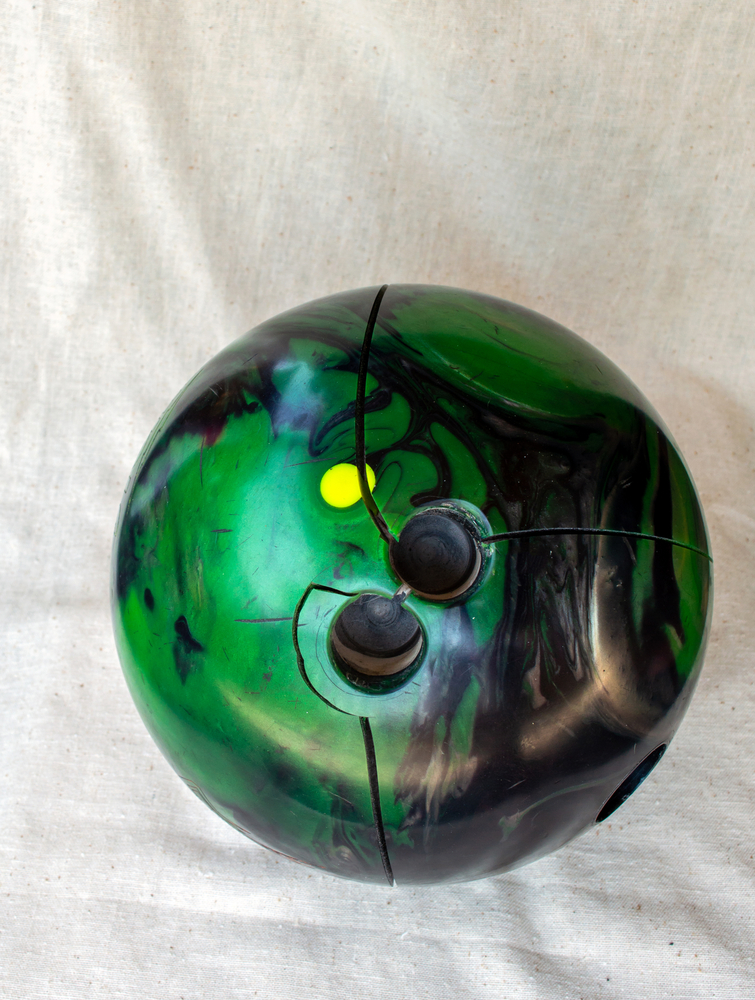
What to Do if You Must Store the Ball in the Garage
There are some instances when you may not have a choice but to store your bowling ball in the garage. In that case, there are some steps you can take to help protect your ball.
- Control your garage's temperature. Ensure your garage's temperature doesn't get hotter or colder than 70 degrees Fahrenheit. To do this, you may have to invest in a garage heater or air conditioner and ensure that the right appliance is running, depending on the weather. It can also help to get your hands on an indoor thermometer so you'll always know your garage's temperature.
- Keep the humidity in check. You can use a dehumidifier to help control the humidity in your garage and protect your ball from moisture damage. The ideal humidity level for bowling balls is between 40 and 50%.
- Place the ball in an appropriate spot and in a protective bag. That means keeping it in an area that doesn't get direct sunlight. You should also store the ball in a proper bowling bag to prevent any chemicals from coming into contact with the ball's coverstock. The right bowling bag will also have cushions to keep the ball from rolling around and sustaining prolonged damage.
- Turn your ball regularly to keep it from warping or cracking from surface pressure. Try to do it once a month, and when you do, ensure that you turn it in different directions and flip it over.
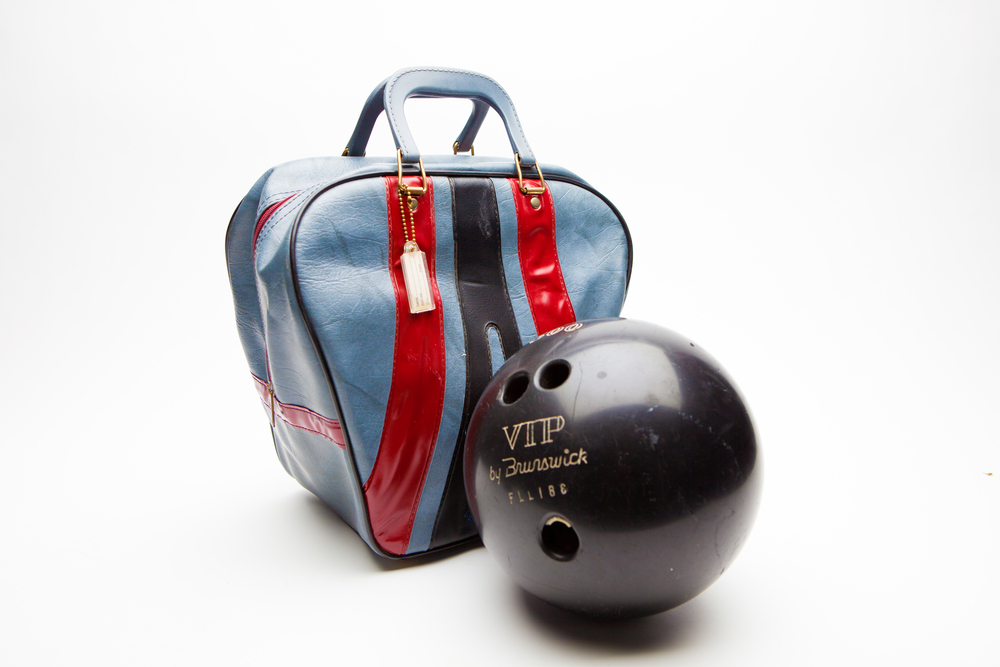
Where Is the Best Place to Store a Bowling Ball?
The best place to store a bowling ball is in your closet. It's out of the way and protected from the elements. There won't be much temperature fluctuation, and the humidity levels will be lower than most garages.
When storing your ball in your closet, you still need to ensure it's adequately protected.
- Find a spot in the closet away from any heating or cooling vents. You don't want any drastic temperature changes that could damage your ball.
- Put your ball in a bowling bag designed for storage. These usually have thicker padding to protect your ball, and they'll also have a spot for a ball cup. The ball cup is important because it helps to keep the ball elevated and limits the risk of ball damage from pressure.
- Consider placing your ball on a shelf to keep it away from any potential moisture on the floor.
- Original packaging is always an option if a storage bag is not available. This will help to protect it from dirt and debris.
When storing your bowling ball, don’t let it rest on the weaker areas like the finger holes. Over time, this can cause the ball to lose its shape.
Also, rotate the ball often. This will help distribute the weight evenly and prevent flat spots from forming. By following these simple guidelines, you can keep your bowling ball in tip-top shape for years to come.
You can use a bowling ball cap and not rest it directly on the shelves.
The next best option is a locker at the local bowling alley.
If you follow these simple steps, you can be sure that your ball will be well-protected while it's stored away.
Can You Repair a Cracked Bowling Ball?
If you store your ball in the garage and then realize that the ball is cracked, you might think that your ball is at the point of no return. But that's not necessarily the case. If your ball is broken, you may be able to repair it.
But don't DIY the repair with random items in your house. There are specialized bowling ball repair kits that you can purchase. These usually come with detailed instructions on how to properly fix a cracked ball.
If you're not confident in your ability to repair the ball, you can take it to a bowling pro shop. They'll have the tools and expertise necessary to fix the issue. It's important to remember that not all cracked balls can be repaired.
If the crack is severe, it might be best to invest in a new ball. But if the crack is small, it's worth considering. Just don't wait too long to fix it, as the damage will only grow larger over time.
If you love your ball, you’ll be glad that you fixed it sooner rather than later.
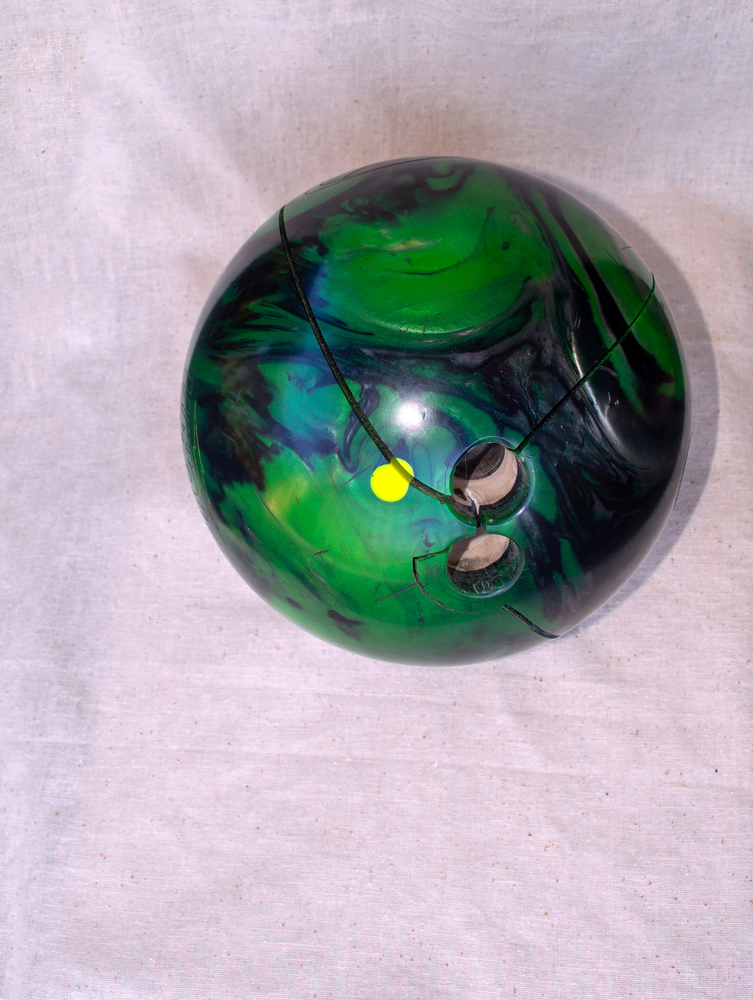
Resurfacing a Warped Ball
If your ball was sitting out in the sun, in a sweltering garage, or in a hot car, it's possible the heat caused the ball to warp. If this is the case, you'll notice that the ball doesn't roll as smoothly as it used to.
The good news is that you can usually fix a warped ball by resurfacing it. This process involves sanding down the ball to even out the surface. You can do this yourself with a sanding block and some elbow grease.
There are also ball spinners available to make it easier to get an even sanding. If you’d rather not bother, you can take it to a professional with the tools and expertise to do the job quickly and efficiently.
Once the ball is resurfaced, it should roll more smoothly. And you'll be able to enjoy your game once again.
Where should I store my bowling balls?
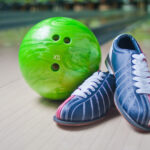
Your bowling ball should be stored in a climate and temperature-controlled environment.
A properly stored bowling ball is kept clean, dry (using a plastic bag is helpful), and free of dust and debris when not in use. As bowling balls are heavy, they should be rotated frequently to prevent the weight from settling on one side of the ball.
Will a bowling ball crack in the cold?

Bowling balls are durable and are made to expand and contract. However, extremely cold weather can crack a bowling ball.
Extreme cold environments require special attention for bowling balls. You never want to bowl with a cold ball. It will not react as expected. In addition, because bowling balls can freeze, it's best to bring your ball inside if temperatures in your area dip into it and stay in the freezing temps for extended periods of time.
Are bowling balls temperature sensitive?
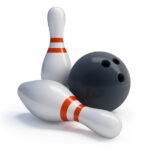
No, to normal temperature changes. Those are expected.
However, bowling balls are sensitive to extreme temperatures. Storing a bowling ball in extremely hot or cold temperatures will damage the coverstock and possibly the ball's core.
Can you leave bowling balls in the heat?

Accidentally leaving your ball in the car in the summer or in a hot garage once or twice is not problematic.
However, long periods of exposure to extremely high heat is detrimental and can be expensive if the damage requires you to replace your ball(s).
How many bowling balls should I have?

One ball will suffice if you are a brand-new bowler. Two or more balls are needed when you begin to understand all bowling balls and lanes are not equal.
As a new novice bowler, your focus is mainly on keeping the ball on the lane and hitting any pins. If you are a brand-new bowler, one bowling ball is enough until it isn't. If you are further along in your understanding of bowling balls and the lanes, you realize you will need a few balls. When you are concerned with understanding the bowling pattern, reactive resin coverstocks, or asymmetrical bowling cores. When these areas of bowling become of interest to level up your game, you'll instinctively know it's time to up your bowling ball arsenal.
Related Articles
So, there you have it - everything you need to know about storing your ball in the garage. We strongly advise against it, as the risk of damage is just too high. But if you choose to do so, follow the steps we've outlined above to ensure that your ball is appropriately protected.
And if your ball becomes damaged, don't despair! Try the tips we've provided on repairing it. With a little effort, you can get your ball back into peak condition.
We hope this article has been helpful to you, and we wish you the best in your bowling endeavors.
Kira Byrd, a Certified Fraud Examiner, holds a B.S. in Accounting from the University of Alabama at Birmingham. With a passion for bowling from her childhood, Kira has poured her expertise and personal experiences into creating and nurturing Bowling For Beginners. Kira's mission is to meet new bowlers where they are and guide them toward consistently achieving higher scores. With a focus on skill development and strategic techniques, she empowers readers to take control of their game and unlock their true potential.
Bowling For Beginners embodies strict editorial integrity, ensuring reliable and unbiased information. Kira's commitment to delivering valuable insights and practical strategies is reflected in every article. Here's an explanation of our editorial policy and how we get money.





